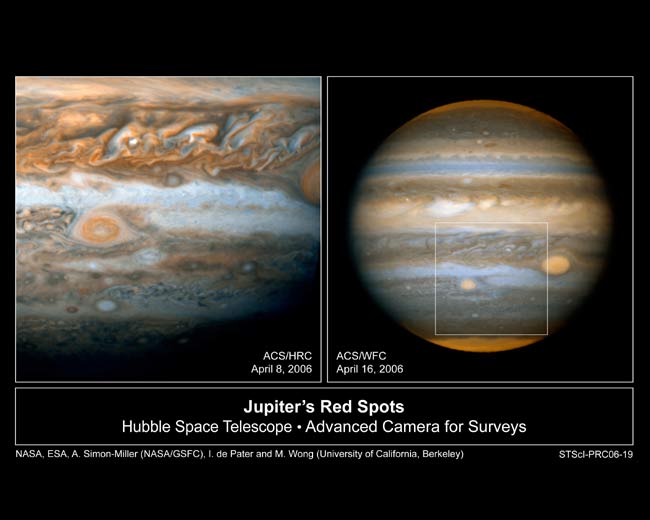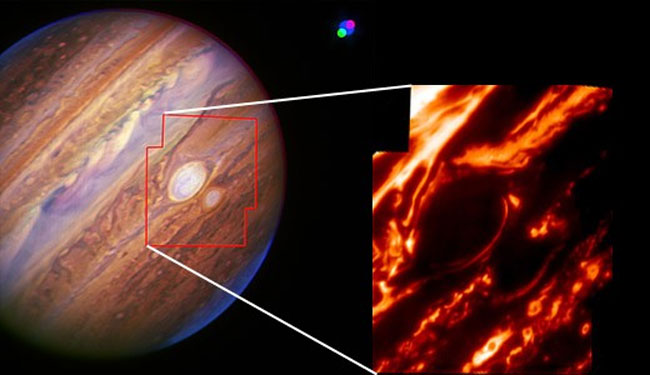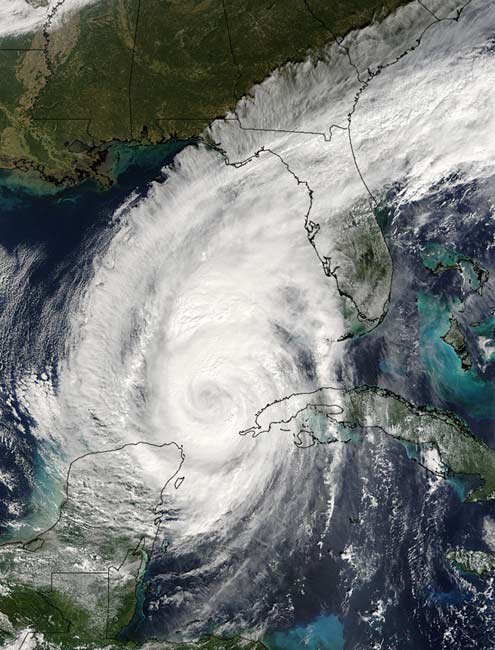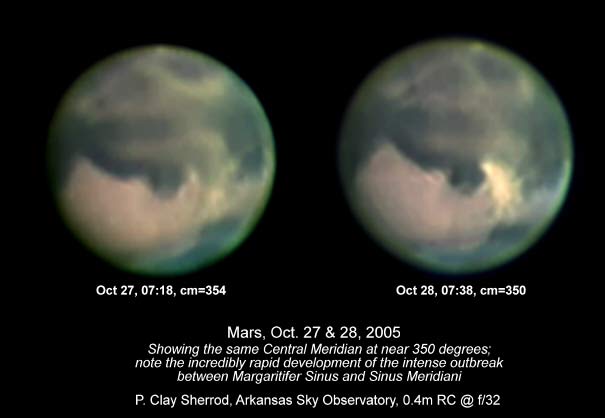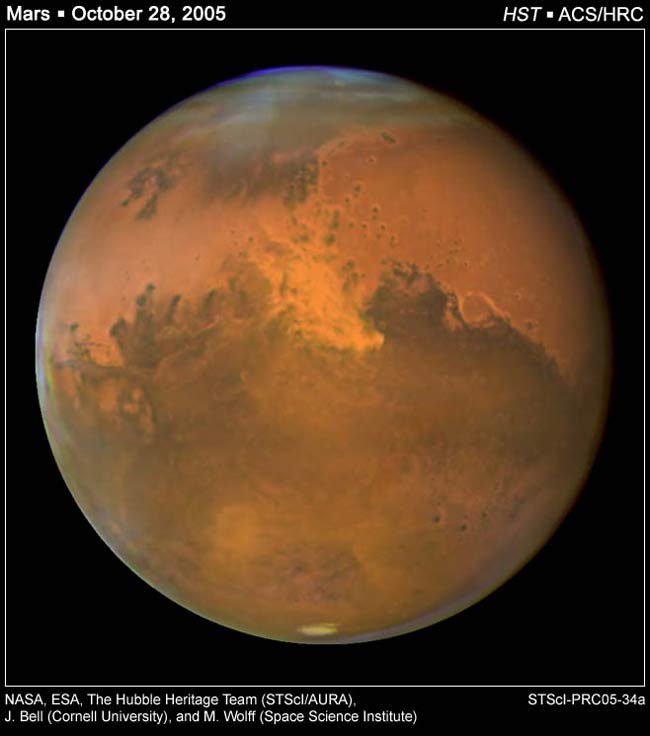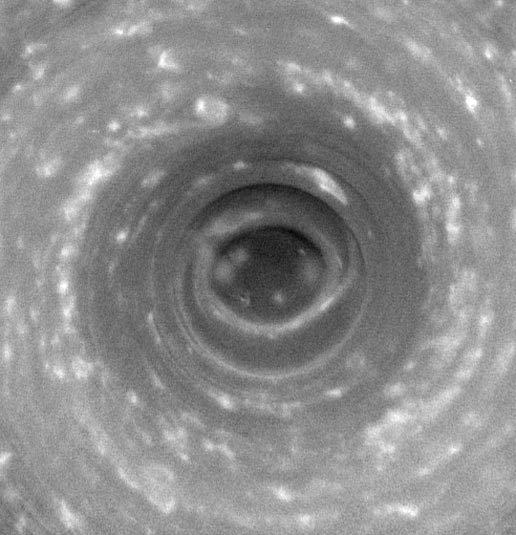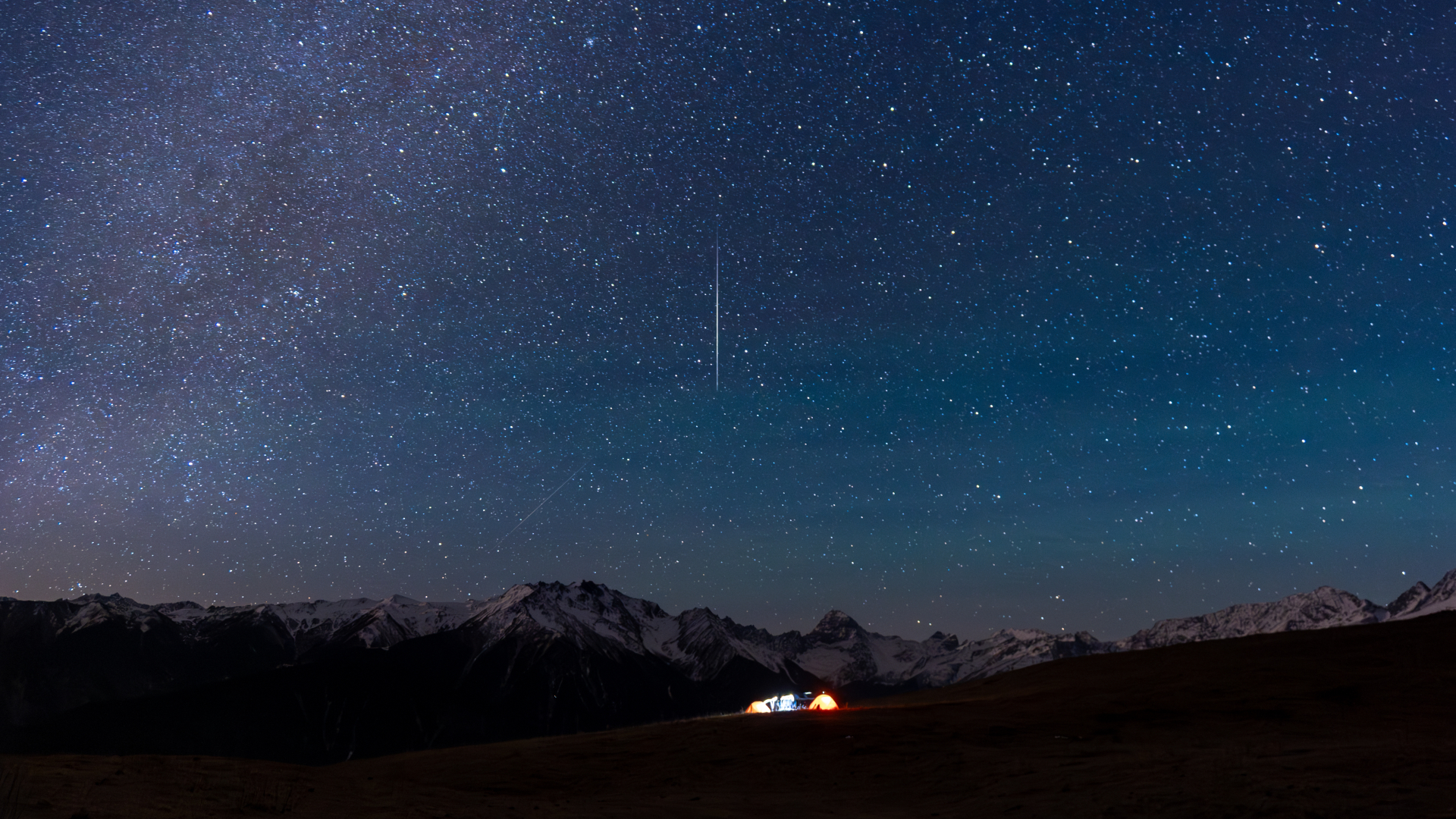Photos: The Most Powerful Storms of the Solar System
Great Red Spot
Jupiter's most familiar feature is swirling mass of clouds that are higher and cooler than surrounding ones. Called the Great Red Spot, it has been likened to a great hurricane and is caused by tremendous winds that develop above the rapidly spinning planet.
The Persistent Hexagon
Saturn's north polar hexagon appears to be a long-lived feature of the atmosphere, having been spotted in images of Saturn in the early 1980s, again in the 1990s, and then by the Cassini spacecraft in the past several years. The persistent nature of the hexagon in imaging observations implies that it is present throughout Saturn's 29-year seasonal cycle. Two sides of the hexagon are seen here on Aug. 25, 2008.
New Storm on Jupiter Hints at Climate Change
Hubble snaps baby pictures of Jupiter's Red Spot Jr.
Surprise! Jupiter Has A New Red Spot
Red spots on Jupiter, photographed on Feb. 27, 2006.
Differences Spotted in Jupiter's Big Red Storms
At left is a false-color composite near-infrared image of Jupiter and its moon Io, taken by the Keck II telescope. At right is a closeup of the two red spots through a 5-micron filter, which samples thermal radiation from deep in the cloud layer. Red Spot Jr. appears darker, either because its clouds are less dense or because the tops of the clouds are not as high as those of the larger spot.
NASA Workers Shield Space Shuttles, Pluto Probe From Hurricane Wilma
The Aqua satellite's MODIS instrument captured this image of Hurricane Wilma on October 23, 2005.
Major Dust Storm on Mars Visible with Backyard Telescopes
Mars on Oct. 27 and 28, 2005 as the dust storm emerged.
Breaking space news, the latest updates on rocket launches, skywatching events and more!
Hubble Snaps Photos of Giant Martian Dust Storm
The dangerous dust storm at the start of "The Martian" might have had a very different effect in reality. This Hubble image of Mars, taken in 2005, shows a 930-mile long dust storm raging across the planet's equator.
Biggest Lightning Storm Ever Recorded on Saturn
The image shows the storm as it appeared to the Cassini imaging system on Jan. 27, 2006. No lightning flashes are visible in the image. They would look like medium-sized bright spots, since the light would spread out before it reaches the cloud tops. Non-detection does not mean that the lightning is absent, however. Lightning might be too faint to stand out above background or too deep to be seen through the thick clouds.
Freak One-Eyed Monster Storm Spotted on Saturn
A 5,000-mile-wide hurricane-like storm swirls at Saturn's south pole. Note the well defined eye.

Space.com is the premier source of space exploration, innovation and astronomy news, chronicling (and celebrating) humanity's ongoing expansion across the final frontier. Originally founded in 1999, Space.com is, and always has been, the passion of writers and editors who are space fans and also trained journalists. Our current news team consists of Editor-in-Chief Tariq Malik; Editor Hanneke Weitering, Senior Space Writer Mike Wall; Senior Writer Meghan Bartels; Senior Writer Chelsea Gohd, Senior Writer Tereza Pultarova and Staff Writer Alexander Cox, focusing on e-commerce. Senior Producer Steve Spaleta oversees our space videos, with Diana Whitcroft as our Social Media Editor.


